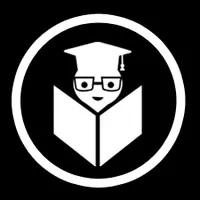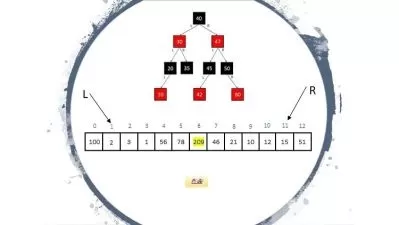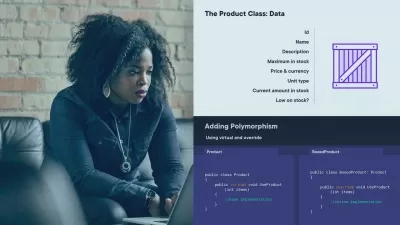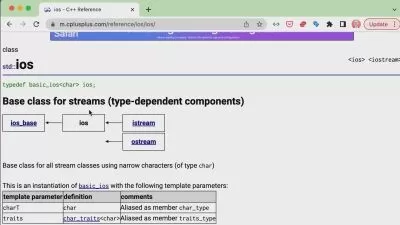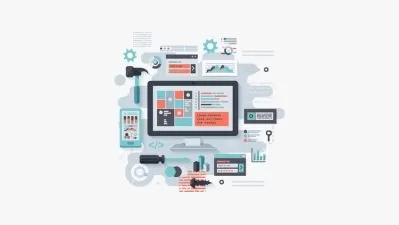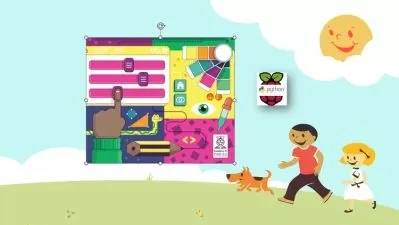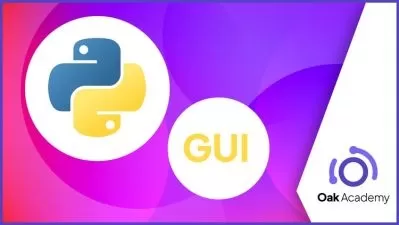Mastering OpenGL for Graphics Programming
EDUCBA Bridging the Gap
10:41:44
Description
Unlock the power of OpenGL and create stunning graphics with our comprehensive course!
What You'll Learn?
- Understanding the fundamentals of OpenGL
- Setting up an OpenGL development environment
- Drawing basic shapes using Modern OpenGL
- Managing vertex buffers and attributes
- Writing and utilizing shaders in OpenGL
- Handling errors in OpenGL applications
- Organizing code efficiently with classes and abstractions
- Implementing textures in OpenGL
- Working with GLM for matrix operations
- Using ImGUI for creating graphical user interfaces
Who is this for?
What You Need to Know?
More details
DescriptionWelcome to "Mastering OpenGL for Graphics Programming," your comprehensive guide to harnessing the power of OpenGL for creating stunning 2D and 3D graphics. This course is meticulously designed to take you from the basics to advanced concepts, providing you with the knowledge and skills needed to excel in graphics programming.
OpenGL is the industry's leading cross-platform API for rendering vector graphics, widely used in gaming, simulation, and virtual reality applications. Whether you're a beginner looking to break into the world of graphics programming or an experienced developer aiming to refine your skills, this course offers something for everyone.
Throughout this course, you will embark on a journey through the fundamental aspects of OpenGL, starting with setting up your development environment and progressing to more complex topics like vertex buffers, shading, texturing, and code organization. Each section is designed to build on the previous one, ensuring a smooth and logical progression of concepts and techniques.
By the end of this course, you will have a deep understanding of OpenGL's capabilities and be well-equipped to create your own sophisticated graphics applications. Let's dive in and start your journey towards becoming an OpenGL expert!
Section 1: OpenGL - Introduction
In this introductory section, students will get acquainted with OpenGL, the premier cross-platform API for rendering 2D and 3D vector graphics. Beginning with a thorough introduction to OpenGL and its importance in the graphics programming landscape, this section covers the essentials of setting up OpenGL on your development environment. Students will also learn how to set up GLEW (OpenGL Extension Wrangler Library) to manage OpenGL extensions efficiently. By the end of this section, students will have drawn their first triangle in modern OpenGL, laying the foundation for more complex graphics programming.
Section 2: OpenGL - Vertex Buffers
This section delves into the core concepts of vertex buffers in OpenGL. Students will explore vertex attributes and shaders, understanding how they interact to produce graphical output. The section includes writing and organizing shaders, with practical exercises on creating and managing vertex and index buffers. Error handling is also emphasized, ensuring students can troubleshoot and debug their OpenGL applications effectively. This foundational knowledge is critical for developing robust and efficient graphics programs.
Section 3: OpenGL - Code Organization
Effective code organization is crucial for managing complex OpenGL projects. In this section, students will learn about uniforms, vertex arrays, and how to abstract vertex and index buffers into manageable classes. The lectures will guide students through abstracting vertex arrays and shader code, ensuring their OpenGL code is modular, maintainable, and scalable. By the end of this section, students will be capable of implementing a simple renderer, streamlining the process of drawing objects in OpenGL.
Section 4: OpenGL - Texturing
The final section of the course focuses on texturing, a key aspect of making 3D graphics look realistic and visually appealing. Students will learn about texture mapping, including how to load and apply textures to 3D objects. The section covers the GLM (OpenGL Mathematics) library for handling complex mathematical operations, and the creation of projection, model, and view matrices to manage object transformations. The section concludes with an introduction to ImGUI, a bloat-free graphical user interface library for C++, which is useful for creating custom user interfaces for OpenGL applications.
By the end of this course, students will have a solid understanding of OpenGL and its various components, enabling them to create sophisticated graphics applications with confidence.
Who this course is for:
- Beginners interested in learning OpenGL
- C++ programmers looking to expand their skills into graphics programming
- Computer Science students studying computer graphics
- Game developers wanting to understand the fundamentals of OpenGL
- Hobbyists and enthusiasts eager to create 3D graphics
- Professionals seeking to refresh their knowledge in modern OpenGL
- Anyone interested in creating visually appealing graphics and applications
Welcome to "Mastering OpenGL for Graphics Programming," your comprehensive guide to harnessing the power of OpenGL for creating stunning 2D and 3D graphics. This course is meticulously designed to take you from the basics to advanced concepts, providing you with the knowledge and skills needed to excel in graphics programming.
OpenGL is the industry's leading cross-platform API for rendering vector graphics, widely used in gaming, simulation, and virtual reality applications. Whether you're a beginner looking to break into the world of graphics programming or an experienced developer aiming to refine your skills, this course offers something for everyone.
Throughout this course, you will embark on a journey through the fundamental aspects of OpenGL, starting with setting up your development environment and progressing to more complex topics like vertex buffers, shading, texturing, and code organization. Each section is designed to build on the previous one, ensuring a smooth and logical progression of concepts and techniques.
By the end of this course, you will have a deep understanding of OpenGL's capabilities and be well-equipped to create your own sophisticated graphics applications. Let's dive in and start your journey towards becoming an OpenGL expert!
Section 1: OpenGL - Introduction
In this introductory section, students will get acquainted with OpenGL, the premier cross-platform API for rendering 2D and 3D vector graphics. Beginning with a thorough introduction to OpenGL and its importance in the graphics programming landscape, this section covers the essentials of setting up OpenGL on your development environment. Students will also learn how to set up GLEW (OpenGL Extension Wrangler Library) to manage OpenGL extensions efficiently. By the end of this section, students will have drawn their first triangle in modern OpenGL, laying the foundation for more complex graphics programming.
Section 2: OpenGL - Vertex Buffers
This section delves into the core concepts of vertex buffers in OpenGL. Students will explore vertex attributes and shaders, understanding how they interact to produce graphical output. The section includes writing and organizing shaders, with practical exercises on creating and managing vertex and index buffers. Error handling is also emphasized, ensuring students can troubleshoot and debug their OpenGL applications effectively. This foundational knowledge is critical for developing robust and efficient graphics programs.
Section 3: OpenGL - Code Organization
Effective code organization is crucial for managing complex OpenGL projects. In this section, students will learn about uniforms, vertex arrays, and how to abstract vertex and index buffers into manageable classes. The lectures will guide students through abstracting vertex arrays and shader code, ensuring their OpenGL code is modular, maintainable, and scalable. By the end of this section, students will be capable of implementing a simple renderer, streamlining the process of drawing objects in OpenGL.
Section 4: OpenGL - Texturing
The final section of the course focuses on texturing, a key aspect of making 3D graphics look realistic and visually appealing. Students will learn about texture mapping, including how to load and apply textures to 3D objects. The section covers the GLM (OpenGL Mathematics) library for handling complex mathematical operations, and the creation of projection, model, and view matrices to manage object transformations. The section concludes with an introduction to ImGUI, a bloat-free graphical user interface library for C++, which is useful for creating custom user interfaces for OpenGL applications.
By the end of this course, students will have a solid understanding of OpenGL and its various components, enabling them to create sophisticated graphics applications with confidence.
Who this course is for:
- Beginners interested in learning OpenGL
- C++ programmers looking to expand their skills into graphics programming
- Computer Science students studying computer graphics
- Game developers wanting to understand the fundamentals of OpenGL
- Hobbyists and enthusiasts eager to create 3D graphics
- Professionals seeking to refresh their knowledge in modern OpenGL
- Anyone interested in creating visually appealing graphics and applications
User Reviews
Rating
EDUCBA Bridging the Gap
Instructor's Courses
Udemy
View courses Udemy- language english
- Training sessions 30
- duration 10:41:44
- Release Date 2024/08/11





